Course:ARST573/Nova Scotia Archives
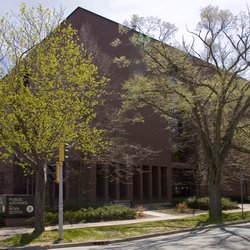
The Nova Scotia Archives, formerly known as the Public Archives of Nova Scotia and the Nova Scotia Archives and Records Management, is the oldest public archives in Canada. Operating in the Canadian ‘Total Archives’ tradition, its mandate is to acquire and preserve the documentary heritage of the province including both public and private records of provincial significance[1]. Textual records comprise 18 000 linear meters while the holdings also include approximately 500 000 photographs, 511 000 architectural drawings, 116 00 maps among other materials such as drawings, sound recordings and videos[2]. It is the second busiest archives in Canada, with over 18 000 visitors each year[3]. Apart from records management, it has a strong tradition of public service for researchers as well as general-interest visitors, operating a range of reference and educational services both onsite at its physical building in Halifax, Nova Scotia, as well as online.
History and Development
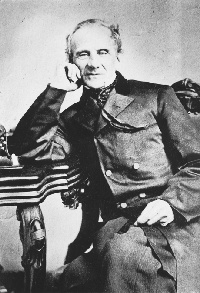
Early Beginnings
Nova Scotia, in the early 1800’s, had no archival repository or trained custodians of records. Historians working in the colony had a difficult time finding adequate information for their research interests and projects, especially in relation to the history of this settlement[4]. In fact, several historians attempted to write a history of the province but had to abandon their projects due to lack of information and access to records, noting how they found research a “frustrating process”[5]. In 1841, Thomas Beamish Akins, a lawyer in the colony, proposed the creation of a repository of provincial records. When Nova Scotia became self -governing in 1848, Akins further advocated for the establishment of a government act regarding the management of public records. He was granted his request and in 1857 he was made first provincial archivist under the title of Records Commissioner of Nova Scotia. The Public Records Act was subsequently passed in 1861 and Akins held his post until retirement in 1891.[6]
The second full time archivist was not appointed until 40 years after the retirement of Akins and government employees filled in for this role during the interim years. In 1929, with the aid of the provincial government and backing from Premier E N. Rhodes, it was announced that Nova Scotia would receive its first purpose built archives building, coinciding with the passing of a new Public Archives Act to replace the Public Records Act of 1861. With this new Act, the archives were formally named the Public Archives of Nova Scotia (PANS). Under the direction of the Board of Trustees of the Public Archives of Nova Scotia (an organization created that same year), the plans were drafted and construction commenced on the building, which officially opened to the public in 1931. On August 3rd, 1931, D.C Harvey became provincial archivist, a post he held until 1956.[7]
The Middle Years: 1956-1982
The third Provincial Archivist was C. Bruce Fergusson who took over for D.C Harvey in 1956. Under the direction of Fergusson, the Public Archives of Nova Scotia saw substantial development and growth. Fergusson, who believed strongly in the total archives concept, oversaw the acquisition of many municipal and county records as well as private records. One key initiative that arose from this time period was a microfilming program, culminating in the creation of approximately ten thousand reels of microfilm. Under Fergusson the PANS’ photograph and map holdings were increased dramatically and the Archives, having outgrown its original building, saw the construction of a new Archives building that opened in 1979.[8]
Recent Developments
Up until 1981 no government department was officially responsible for the Public Archives of Nova Scotia. However in 1981, PANS became part of the Department of Culture, Recreation and Fitness. In 1996 the Government Records Act was passed and the Public Archives assumed the additional responsibility (in 1997) for the management of all government records and was renamed Nova Scotia Archives and Records Management to signify its new institutional role and organization. A year later, in 1998, a new Public Archives Act entrenching and reaffirming the position and revised responsibilities of the Provincial Archivist was passed and subsequently all employees of NSARM became civil servants. Nova Scotia Archives and Records Management became a division of the Department of Tourism, Culture and Heritage, which is currently known as the Department of Communities, Culture and Heritage. An institutional reshuffle occurred again in 2009 and the responsibility for the management of government records was transferred to the Treasury and Policy Board, even though the Archives is still responsible for advising the Board on management policies and procedures. To reflect this change in responsibilities and mandate, NSARM was officially renamed the Nova Scotia Archives (NSA) in March 2011[9].
Legislation
The first piece of archival legislation passed within Nova Scotia was a pre-Confederation statute: “This statute (Chapter 24 of the Revised Statutes of Nova Scotia, 1864, titled ‘Of The Public Records’ – declared that the ‘books, papers and records of all public offices, provincial and county, are hereby vested in her majesty the queen and her successors...’”[10] However the first official Act governing the management and preservation of public records was passed in 1861, proceeding from the establishment of the Nova Scotia Records Commission in 1957 and was titled the Public Records Act. This Act was replaced in 1929 by the Public Archives Act, which, until the mid 1990s, formed the backbone of provincial archival legislation in the province.
The mid 1990’s ushered in a period of legislative renewal and change for the Public Archives. In 1996 the Government Records Act was passed which designated responsibility to the Public Archives for the management of all provincial, government records.[11] In order to reflect this legislative change, the Public Archives was renamed Nova Scotia Archives and Records Management (NSARM). In 1998, the Public Archives Act, which had remained largely unchanged since 1929, was revised and renewed in order to provide the institution, heading into the 21st century, with an appropriate and up to date legislative framework to work within. The new Act was formulated around NSARM’s “expanded mandate [as a result of its] merg[er] with Nova Scotia Records Management to provide an integrated archives and records management program for all government records”.[12] The aim of the new legislation was to enable NSARM to develop effective archival and records management programs for all areas of the provincial government[13] , including the development of up to date “policies, standards, procedures and services for efficient records management”.[14]
In 2009, the Government Records Act was amended and responsibility for the management of government records was transferred to the Treasury and Policy Board, even though the Archives still maintains an advisory role on the Treasury Board's Records Management Policy. As a result of these changes, NSARM changed its name to the Nova Scotia Archives in 2011[15].
Organizational Mandate and Structure
The mandate of the Nova Scotia Archives can be broken down into two main functions, which also reflect the organizational structure of the institution. The first function is records management. This refers to the fact that the NSA is “ the permanent repository for the archival records of Nova Scotia” as well as mandated to “acquir[e] and preserv[e] provincially significant archival records” from both the public and private sectors. The second function of the NSA is to render public service to the citizens of Nova Scotia. The NSA is mandated to deliver reference services to the public, to develop two websites and to provide assistance in the development of the provincial archival community[16].
Archives Management
As the permanent repository for the records of all provincial government departments, the NSA contributes to government accountability and integrity through the preservation of these records as well as through providing an advisory role to the Treasury and Policy Board, which is the department now responsible for the records management program of Nova Scotia. Advisory services are given on such issues as records management policies and procedures[17]. The NSA also manages and preserves private records deemed of provincially significant value and, as such, “ plays a leading role in delivering a systematic preservation management program to support the Archives' mandate to preserve and make available the province's documentary heritage.[18]” The NSA, in line with its commitment to the importance of quality archives management, posts all of its institutional policies to its website. Institutional policies for acquisition, appraisal, accession, arrangement and copyright are a sample of the various policies available for access.[19].
Public Services
The public services function of the Nova Scotia archives firstly and foremost focuses on carrying out reference aid to archives users. In an attempt to meet its mandate to provide archival access and education to a broader range of the Nova Scotian public at large, it has developed two websites (the NS Archives @http://novascotia.ca/archives/ and Nova Scotia Historical Vital Statistics @www.novascotiagenealogy.com), which both offer a “variety of online resources and services designed to help Nova Scotians build a sense of identity by exploring their family, community and provincial heritage”. More recently the NSA has attempted to increase its outreach further and to a younger demographic by expanding its presence into social media outlets through the creation of an active YouTube channel and Facebook page.
Nova Scotia Historical Vital Statistics
The Nova Scotia Archives holds a large collection of vital statistics and has created a website titled ‘Nova Scotia Historical Vital statistics @ www.novascotiagenealogy.com) in order to provide easy access to these records, often used primarily for genealogical research. The records of birth, death and marriages as well as nominal indexes and digitized images to these vital statistics are accessible on the website[20].
In 2004, a new records retention schedule for these vital records was implemented by the Department of Vital Statistics, which shortened the active life of birth, marriage and death records, thereby enabling quicker public access and permanent transferal of inactive records to the Nova Scotia Archives for preservation. Birth records are transferred to the NSA and become available 100 years after the end of the year in which the birth was registered. Marriage records are available 75 years after the end of the registration year and deaths 50 years after end of registration year[21].
Nova Scotia Archives are known for having a very extensive collection of and sophisticated management system for its vital records. The largely organic development of this system was partly due to the heavy demands placed on the NS Archives by researchers with genealogical interests. Genealogical research in Nova Scotia is unusually popular compared to genealogical research demands in other provinces. In order to keep up with these demands, the NSA, since its founding, has had to create an extensive array of finding aids and complex management and access policies in order to effectively deal with the demand for access placed upon these vital statistics[22].
Currently, the Department of Vital Statistics electronically indexes all vital records during their active life and these indexes are given over to the NSA at the time of transfer[23]. As soon as custody of the records is given over to the NSA, the records are digitized and then put on microfilm to ensure long-term preservation. All older records are available either in the original or on microfilm[24]. After digitization occurs, “the digital images are migrated into the master database system, where they are matched and integrated with the name indexes. The information (images plus linked names) is then uploaded to the public database available at www.novascotiagenealogy.com.[25]”
Nova Scotia Archives Website
The Nova Scotia Archives’ website, found at http://novascotia.ca/archives/ provides extensive information about the NSA to prospective users of the Archives such as its mandate, hours of operation and location. It is also an initial research tool and access interface to several online indexes and databases made available by the NSA from which to gather information about the NSA’s holdings. While the databases provide access to indexes of holdings, they do not provide access to the actual primary materials in the fonds themselves. In order to fulfill its mandate for public service and education, the NSA’s website is host to many virtual exhibitions that seek to engage prospective users of the Archives and act as a public outreach tool. These virtual exhibits reflect the increasing emphasis that many archival institutions have recently placed on digital preservation and online access[26]. This emphasis on the digitization of holdings and services, it is hoped, will help the Nova Scotian public understand more directly what it is that archival institutions do and how their collections are structured[27].
Social Media
Separate from its official website, the NSA, like many archival institutions in the past few years, has attempted to extend its public outreach to a younger demographic through the use of social media. Since 2010, the NSA has operated a YouTube channel found at https://www.youtube.com/user/nsarchives/ where it showcases some of the films found in its Eastern Eyes database. Home movies and moving images of early Halifax are only a couple of the hundreds of videos available to watch. The NSA also has a very active Facebook page (found at https://www.facebook.com/novascotiaarchives) where a daily item from the NSA’s holdings is displayed and contextualized in relation to a significant date from Nova Scotian history[28].
Holdings, Virtual Exhibits and Databases
The Nova Scotia Archives house an extensive collection of inactive government records and provincially significant private records with dates ranging from 1702 to present. The holdings include records of corporate bodies, churches, businesses and other organizations as well as the papers of private individuals and families. Textual records comprise 18 000 linear meters while the holdings also include approximately 500 000 photographs, 511 000 architectural drawings, 116 00 maps among other materials such as drawings and sound and video recordings[29]. Some of the key holdings of the NSA have been made into virtual exhibits. Furthermore, several searchable databases have been created in order to increase accessibility of the holdings.
Notable fonds
W.R MacAskill Photographic fonds

Wallace R. MacAskill is one of Nova Scotia’s best known photographers who was famous for his images of seascapes and sailing vessels, including those taken of the Bluenose racing schooner. This fonds comprises over 4600 photographs and is one of the fonds which has been made partially available online as a virtual exhibit[30].
Helen Creighton fonds
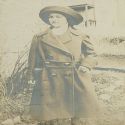
Helen Creighton (1899-1989) was one of Canada's best-known and internationally renowned folklorists and researchers whose career spanned sixty years. Her personal papers document both her personal and professional life and form the largest private-sector fonds within the NS Archives’ holdings. Her work collecting, recording and documenting folk songs and stories from the Maritimes constitutes a significant cultural heritage resource. Her fonds consists of 12.6m of textual records and other material such as 2788 black and white photographs, 552 audio tape reels, 20 glass slides, 7 drawings, 4 video cassettes and 3 film reels[31].
Mary E. Black fonds

Mary Ellouise Black, was a master weaver and is largely responsible for the crafts renaissance in Nova Scotia during the 1940s and 50s. Apart from publishing a book titled The Key to Weaving, she was also an occupational therapist and teacher. Her fonds documents both her professional career and private life. It includes 8.9 m of textual records as well as 17.5cm of photographs, 3cm of slides, 1 painting, 1 audio cassette and 1 film reel. It contains manuscripts, letters, drafts, newspaper clippings and other ephemera pertaining to her career, artistic endeavors and daily life.[32]
Virtual Exhibits
'The Way We Were': Nova Scotia in Film, 1917-1957
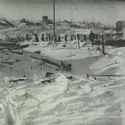
This virtual exhibit comprises 96 home videos and historical moving images from several different fonds. It can be accessed on the NAS website as well as on its YouTube channel.
Halifax and Its People
This online exhibit was the first created by NS Archives in 1999 to celebrate the 250th anniversary of the founding of Halifax. It comprises 150 online images depicting the urban development of Halifax from the NSA’s holdings to represent the 150 years that the NSA has been preserving the documentary heritage of the province[33].
Bluenose: A Canadian Icon
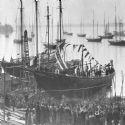
This online exhibit comprises approximately 350 photographs, document and charts relating to the historically famous racing schooners the Bluenose and Bluenose II. This exhibit is the product of a mixture of three different fonds in order to best represent the history of this important ship to Canadian history and collective memory[34].
Databases
The NSA has also created several databases enabling its holdings to be searched via its website.
Government Administrative Histories Online
This is the searchable database for the administrative histories of all 108 public bodies and records in the province dating back to 250 years ago. The administrative histories comprise such things as “primarily statutes and orders in council, supplemented by government publications or other authoritative sources”. The database is updated regularly to account for departmental restructuring and name changing[35].
BosaNova
BosaNova is the NSA’s main online descriptive records database. Court records and land records among others can be accessed using this database[36].
Eastern Eye: A Nova Scotia Filmography (1899 – 1973)
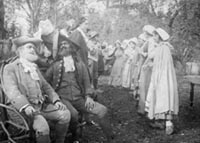
Eastern Eye is the descriptive database for NAS’ holdings of moving images. It is the first database of moving images in the province and brings together “the broad spectrum of film and video production in Nova Scotia”[37]. The database includes video and television productions produced in Nova Scotia and/or about Nova Scotia.
Location, Hours & Additional Services
Location
The Nova Scotia Archives building is located at 6016 University Avenue, Halifax, Nova Scotia, Canada, B3H 1W4[38].
Hours
The Nova Scotia Archives’ reading rooms and reference services are available from Monday to Friday 8:30 to 4:30 pm, Wednesday evenings from 4:30 to 9:00 pm and Saturdays from 9 am to 5 pm. The NSA building is closed on all statutory holidays. Pre-booking is required in order to access materials on Wednesday evenings and Saturdays[39].
Additional Services
Reference services can be provided in French if requested. The NS Archives’ access areas are all equipped with Wifi access. For those unable to travel to the Archives in person, the NSA provides a list of professional researchers available for hire which is posted on the NSA website and is available upon request[40].
Related Institutions
Other Provincial Archival Associations
Council of Nova Scotia Archives http://www.councilofnsarchives.ca/
Public Archives of Nova Scotia Board of Trustees http://cch.novascotia.ca/advisory-boards-and-councils/public-archives-nova-scotia-board
Nova Scotia University Archives
Acadia University Archives http://library.acadiau.ca/archives/
Cape Breton University Archives http://www.cbu.ca/beaton#.VRC77SjWoWE
Dalhousie University Archives http://libraries.dal.ca/collection/archives.html
St. Francis Xavier University Archives http://sites.stfx.ca/library/archives/home/
University of Kings College Archives http://www.ukings.ca/archives
Nova Scotia Municipal Archives
Colchester County Historeum http://colchesterhistoreum.ca/
Cumberland County Museum and Archives http://www.cumberlandcountymuseum.com/
Halifax Municipal Archives http://www.halifax.ca/archives/
Shelburne County Archives http://nsgna.ednet.ns.ca/shelburne/
Victoria County Archives http://www.victoriacounty.com/heritage-a-archives.html
Yarmouth County Museum and Archives http://yarmouthcountymuseum.ca/
See Also
References
<references>
- ↑ Nova Scotia Department of Education and Culture. “New Act for Public Archives of Nova Scotia”, October 26, 1998. Accessed Feb 20th, 2015. http://novascotia.ca/news/release/?id=19981026002
- ↑ Canadian Council of Archives. “Nova Scotia Archives and Records Management.” Last accessed March 18th, 2015. http://www.cdncouncilarchives.ca/displayresults.asp?n=605&l=English
- ↑ Nova Scotia Department of Education and Culture. “New Act for Public Archives of Nova Scotia”, October 26, 1998. Accessed Feb 20th, 2015. http://novascotia.ca/news/release/?id=19981026002
- ↑ Fergusson, Bruce C. “The Public Archives of Nova Scotia.” Acadiensis Vol. 2, No.1 (1972): pg 72
- ↑ Ian Wilson,‘A Noble Dream’: The Origins of the Public Archives of Canada,” Archivaria 15 (Winter 1982–83) pg 17
- ↑ MemoryNS: A Catalogue of Archived Records Preserved in Nova Scotia. “Nova Scotia Archives” Accessed Feb 21st, 2015. https://memoryns.ca/nova-scotia-archives
- ↑ Fergusson, Bruce C. “The Public Archives of Nova Scotia.” Acadiensis Vol. 2, No.1 (1972) pg 75
- ↑ B. Cuthbertson, “ Charles Bruce Fergusson,” Archivaria 7 (1978): 161-162
- ↑ MemoryNS: A Catalogue of Archived Records Preserved in Nova Scotia. “Nova Scotia Archives” Accessed Feb 21st, 2015. https://memoryns.ca/nova-scotia-archives Fergusson, Bruce C. “The Public Archives of Nova Scotia.” Acadiensis Vol. 2, No.1 (1972) pg 75
- ↑ Fergusson, Bruce C. “The Public Archives of Nova Scotia.” Acadiensis Vol. 2, No.1 (1972) pg 75
- ↑ Atlantic Association of Historians, “Provincial Archives of Nova Scotia”, AAH Newsletter 36 (1999) http://web.umoncton.ca/umcm-aah-aha/an_bull03615.html
- ↑ Nova Scotia Department of Education and Culture. “New Act for Public Archives of Nova Scotia”, October 26, 1998. Accessed Feb 20th, 2015. http://novascotia.ca/news/release/?id=19981026002
- ↑ Atlantic Association of Historians, “Provincial Archives of Nova Scotia”, AAH Newsletter 36 (1999) http://web.umoncton.ca/umcm-aah-aha/an_bull03615.html
- ↑ Nova Scotia Department of Education and Culture. “New Act for Public Archives of Nova Scotia”, October 26, 1998. Accessed Feb 20th, 2015. http://novascotia.ca/news/release/?id=19981026002
- ↑ MemoryNS: A Catalogue of Archived Records Preserved in Nova Scotia. “Nova Scotia Archives” Accessed Feb 21st, 2015. https://memoryns.ca/nova-scotia-archives
- ↑ Nova Scotia Archives. “About Us”. Last accessed Feb 23, 2015. http://novascotia.ca/archives/about/
- ↑ MemoryNS: A Catalogue of Archived Records Preserved in Nova Scotia. “Nova Scotia Archives” Accessed Feb 21st, 2015. https://memoryns.ca/nova-scotia-archives
- ↑ ibid.
- ↑ Nova Scotia Archives. “Approved Policies”. Last accessed Feb 23, 2015. http://novascotia.ca/archives/about/policies.asp
- ↑ http://www.bac-lac.gc.ca/eng/discover/genealogy/places/Pages/nova-scotia.aspx
- ↑ Nova Scotia Archives. “Release Policy”. Last Accessed March 18, 2015. https://www.novascotiagenealogy.com/ReleasePolicy.aspx
- ↑ Gwyn, Julian. “Public Archives of Nova Scotia, Nova Scotia Genealogical Sources County Guide Series.” Archivaria Vol 29 (1989): pg 250
- ↑ Nova Scotia Archives. “Release Policy”. Last Accessed March 18, 2015. https://www.novascotiagenealogy.com/ReleasePolicy.aspx
- ↑ Gwyn, Julian. “Public Archives of Nova Scotia, Nova Scotia Genealogical Sources County Guide Series.” Archivaria Vol 29 (1989): pg 250
- ↑ Nova Scotia Archives. “Release Policy”. Last Accessed March 18, 2015. https://www.novascotiagenealogy.com/ReleasePolicy.aspx
- ↑ “Archives bring historic aerial views of Nova Scotia communities online.” The Vanguard, Jan 25th, 2013. http://www.thevanguard.ca/Living/2013-01-25/article-3163733/Archives-bring-historic-aerial-views-of-Nova-Scotia-communities-online/1
- ↑ Rombout, Melissa. “NOVA SCOTIA ARCHIVES AND RECORDS MANAGEMENT, Halifax and Its People, 1749–1999: Images from Nova Scotia Archives and Records Management”. Archivaria Vol 50 (2000):pg 177
- ↑ https://www.youtube.com/user/nsarchives/about
- ↑ Canadian Council of Archives. “Nova Scotia Archives and Records Management.” Last accessed March 18th, 2015. http://www.cdncouncilarchives.ca/displayresults.asp?n=605&l=English
- ↑ Nova Scotia Archives. “W.R MacAskill Photographic Fonds”. Last accessed March 18th, 2015. http://novascotia.ca/archives/virtual/macaskill/
- ↑ Nova Scotia Archives. “Helen Creighton fonds”. Last Accessed March 18th, 2015. http://novascotia.ca/archives/virtual/creighton/description.asp
- ↑ Nova Scotia Archives. “Mary E. Black”. Last Accessed March 18th, 2015. http://novascotia.ca/archives/virtual/black/description.asp
- ↑ Rombout, Melissa. “NOVA SCOTIA ARCHIVES AND RECORDS MANAGEMENT, Halifax and Its People, 1749–1999: Images from Nova Scotia Archives and Records Management”. Archivaria Vol 50 (2000): pg 177
- ↑ Nova Scotia Archives. “Bluenose & Bluenose II”. Last Accessed March 18th, 2015. http://novascotia.ca/archives/virtual/bluenose/
- ↑ Nova Scotia Archives. “Government Administrative Histories Online”. Last Accessed March 18th, 2015. http://novascotia.ca/archives/gaho/
- ↑ Canadian Council of Archives. “Nova Scotia Archives and Records Management.” Last accessed March 18th, 2015. http://www.cdncouncilarchives.ca/displayresults.asp?n=605&l=English
- ↑ Nova Scotia Archives. “Eastern Eye: A Nova Scotia Filmography”. Last Accessed March 18th, 2015. http://novascotia.ca/archives/virtual/easterneye/
- ↑ Nova Scotia Archives. “Using”. Last Accessed March 18th, 2015. http://novascotia.ca/archives/using/?P=hours
- ↑ ibid.
- ↑ ibid.